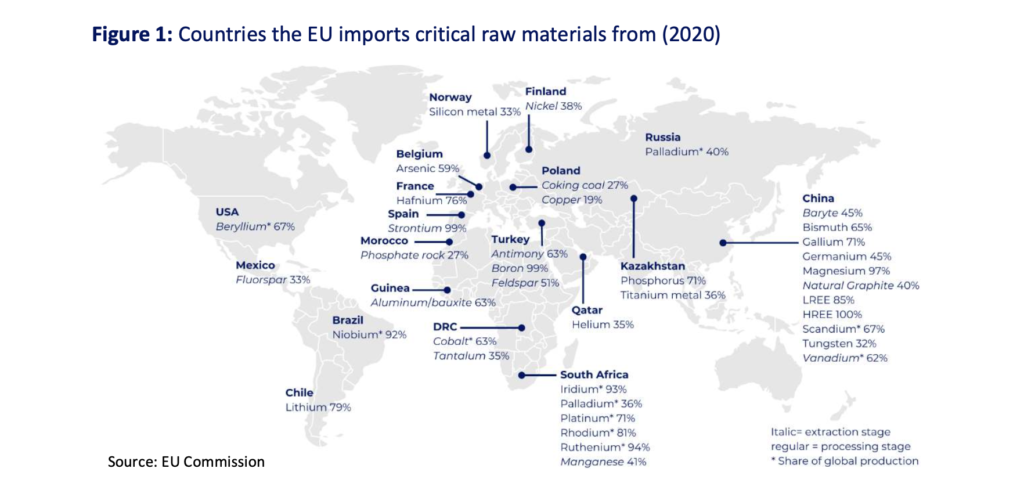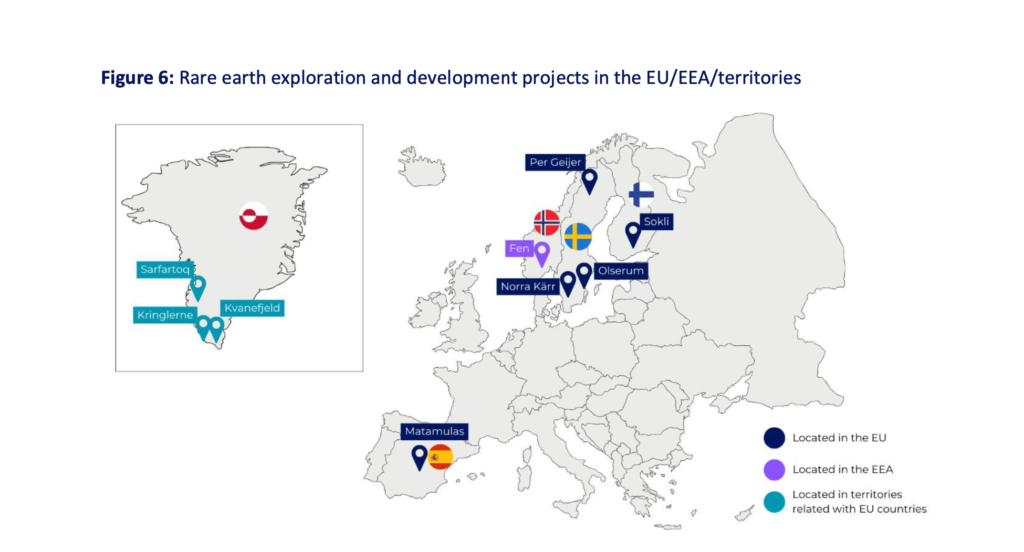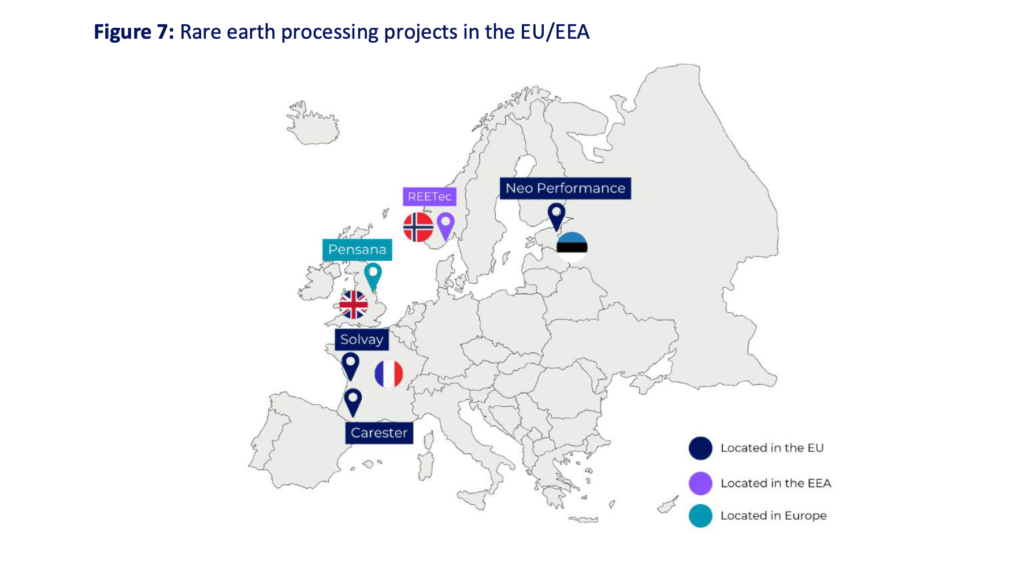CRMA: Rare earth elements a potential blindspot for EU policymakers and industry – report
Amanda Stutt | May 13, 2024 |
 LKAB broadened its business in 2022 to extract phosphorus and rare earths as residual products from iron ore production. (Image: Future circular industrial park LKAB.)
LKAB broadened its business in 2022 to extract phosphorus and rare earths as residual products from iron ore production. (Image: Future circular industrial park LKAB.)When the European Union passed the Critical Raw Materials Act (CRMA) into law it was a landmark accomplishment that will strengthen critical raw materials supply chains – but not without some foreseeable challenges, according to a new report published by Adamas Intelligence.

While the EU published its first list of Critical Raw Materials in 2011 (there were originally 14 inclusions), it took over a decade to conceive, rally political support for, and ultimately announce the CRMA in September 2022, Adamas notes.
In March 2023, the EU Commission officially tabled a proposal for the CRMA as part of the Green Deal Industrial Plan for the Net-Zero Age, to which EU Parliament agreed in December of that year. In March 2024, the EU Council approved and adopted the act and in May, the act passed into law.
The EU developed the CRMA to bolster domestic supply chains while helping enable economic and environmental sustainability in the region. It identified 34 critical raw materials, of which 16 are deemed strategic raw materials. Among the strategic are rare earth elements and lithium, both crucial to the transition to electromobility and renewable power generation.
They are also critical to enabling the economic success and competitiveness of domestic manufacturers reliant on sustainable supplies that are mostly imported, the report notes. The CRMA directs EU member states to develop national mineral exploration programs for CRMs, which alone could boost exploration and development activity on the continent to unprecedented levels.
The EU Commission will publish projections of the expected annual consumption of each of the 34 CRMs for the years 2030, 2040 and 2050, with the first expected within 18 months of the act coming into law.
Supply chain risks
“The EU must mitigate the supply chains risks related to strategic dependencies to enhance its economic resilience, and the CRMA seeks to limit the EU’s imports from individual non-member states or nations to reduce single-source over dependencies,” Adamas analysts note.

CRMA mandates that 10% of the EU’s annual consumption must be mined domestically, 40% must be processed domestically, and 25% of all processing waste and end-of-life scrap must be recycled domestically by 2030. The act also stipulates the EU may not source over 65% of any strategic raw material from a single nation.
“Lithium and rare earths will soon be more important than oil and gas,” European Commission President Ursula von der Leyen said during her State of the Union address in 2022. “Lithium and rare earths are already replacing gas and oil at the heart of our economy. By 2030, our demand for those rare earth metals will increase fivefold.”
In the case of rare earth elements and lithium, the EU is host to sufficient mineral resources to meet CRMA targets, Adamas Intelligence notes, while pointing out that, to-date, political and social resistance, coupled with complacency on the part of some end-users, have hampered necessary investment and development.
The Wolfsberg lithium project in Carinthia, Austria, is set to become the EU’s only producing battery-grade lithium mine by 2027, owned by Critical Metals (Nasdaq: CRML). The EU does produce lithium in Portugal, but it is mainly used in glassware and ceramics.
Mining giant Rio Tinto (ASX: RIO) wanted to develop a lithium mine near Loznica in the western Jadar river valley, one of Serbia’s main agricultural hubs, but after Rio spent millions on preliminary economic assessments and feasibility studies, the Serbian government revoked licenses for the Jadar project in January 2022 after massive protests sparked by environmental concerns about the planned mine.
While lithium’s role in electrification and the energy transition is generally understood in society, the intricate role of rare earth elements is less understood, presenting a potential blindspot that EU policymakers and industry participants should be aware of, Adamas warns.
Filling the rare earths gap

Source: Adamas Intelligence
A detailed review of the act reveals a disproportionately high focus on raw materials used to produce rare earth permanent magnets, such as neodymium, praseodymium, dysprosium and terbium, according to Adamas Intelligence.
“The outlook for rare earths is concerning, with the region unlikely to meet 2030 extraction or processing targets across the entirety of the value chain without an expedited, concerted push from government and industry,” the firm notes.
Without sufficient end-to-end processing capacity in the region, the EU may be constrained in its ability to recover rare earths from magnet production swarf and end-of-life devices, if first it can overcome hurdles related to sourcing and centralizing feedstocks, Adamas Intelligence points out.
A detailed review of the act reveals a disproportionately high focus on raw materials used to produce rare earth permanent magnets, such as neodymium, praseodymium, dysprosium and terbium, according to Adamas Intelligence.
“The outlook for rare earths is concerning, with the region unlikely to meet 2030 extraction or processing targets across the entirety of the value chain without an expedited, concerted push from government and industry,” the firm notes.
Without sufficient end-to-end processing capacity in the region, the EU may be constrained in its ability to recover rare earths from magnet production swarf and end-of-life devices, if first it can overcome hurdles related to sourcing and centralizing feedstocks, Adamas Intelligence points out.

Source: Adamas Intelligence
In the firm’s view, it is essential that EU politicians and industry stakeholders seek dialogue with the union’s population to inform, educate and foster acceptance of responsible mining projects in member states.
The Commission states it will streamline permitting for supply chain development projects and establish a system to facilitate offtake agreements, but the US Inflation Reduction Act has fueled fears of an exodus of industry players from the EU due to competitive subsidies being offered by the former, the firm points out.
Additional challenges for the EU’s competitiveness are, for example, high energy prices and slow bureaucracy, Adamas says.
According to Swedish state-owned miner LKAB, “the greatest threat to the mining and processing of materials that are indispensable for society is administrative in nature.”
Read the full report here, a collaboration between Adamas Intelligence contributors: Ryan Castilloux, James Tekune and Chris Williams and Tradium contributors: Brian Hendrich, Eric Hendrich, Jan Giese and Isabella Mook.
In the firm’s view, it is essential that EU politicians and industry stakeholders seek dialogue with the union’s population to inform, educate and foster acceptance of responsible mining projects in member states.
The Commission states it will streamline permitting for supply chain development projects and establish a system to facilitate offtake agreements, but the US Inflation Reduction Act has fueled fears of an exodus of industry players from the EU due to competitive subsidies being offered by the former, the firm points out.
Additional challenges for the EU’s competitiveness are, for example, high energy prices and slow bureaucracy, Adamas says.
According to Swedish state-owned miner LKAB, “the greatest threat to the mining and processing of materials that are indispensable for society is administrative in nature.”
Read the full report here, a collaboration between Adamas Intelligence contributors: Ryan Castilloux, James Tekune and Chris Williams and Tradium contributors: Brian Hendrich, Eric Hendrich, Jan Giese and Isabella Mook.
No comments:
Post a Comment